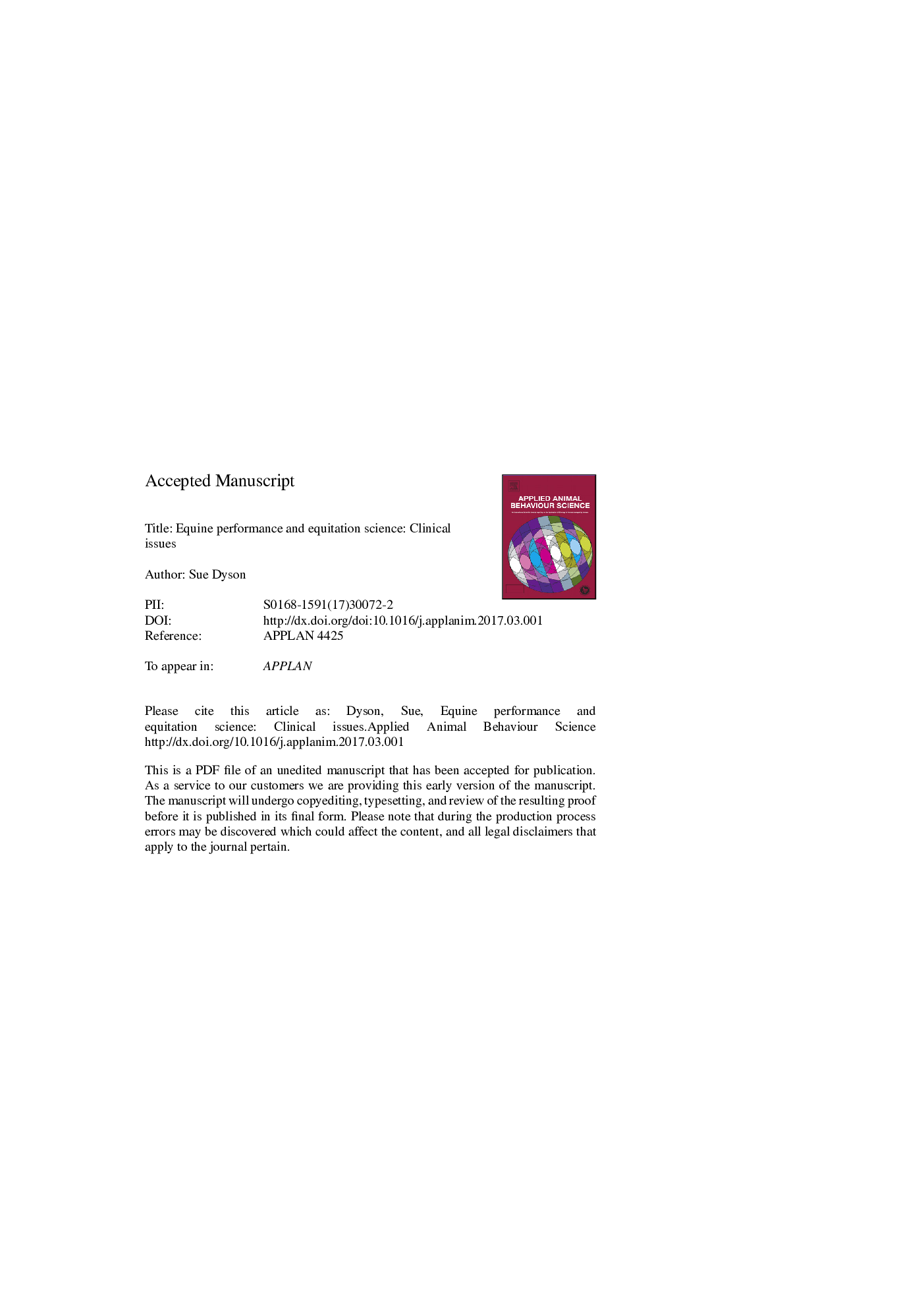| کد مقاله | کد نشریه | سال انتشار | مقاله انگلیسی | نسخه تمام متن |
|---|---|---|---|---|
| 5763434 | 1625316 | 2017 | 50 صفحه PDF | دانلود رایگان |
عنوان انگلیسی مقاله ISI
Equine performance and equitation science: Clinical issues
ترجمه فارسی عنوان
عملکرد اسب و محرک علم: مسائل بالینی
دانلود مقاله + سفارش ترجمه
دانلود مقاله ISI انگلیسی
رایگان برای ایرانیان
کلمات کلیدی
لنگش، تورا کالومبر، سازگاری، عدم تقارن پا، زین اسب، علوم انسانی،
موضوعات مرتبط
علوم زیستی و بیوفناوری
علوم کشاورزی و بیولوژیک
علوم دامی و جانورشناسی
چکیده انگلیسی
The quality of equine performance can be influenced by pain, whether or not that results in overt lameness. Recognition of low-grade lameness is challenging, but with careful observation there are many clues which veterinarians, riders and trainers should recognise. Riders and trainers are frequently unable or unwilling to recognise lameness or other behavioural changes that are a manifestation of pain. Work discipline, body size and conformation may be risk factors for lameness. Work surfaces may also have a role. There is an integral relationship between limb and thoracolumbosacral function. There is also an interaction between the rider and thoracolumbosacral function and health. The saddle is an interface between the rider and the horse and saddle-fit for both horse and rider is crucial for optimal thoracolumbar health and function. The tendency of a saddle to persistently slip to one side is most commonly secondary to hind limb lameness. The rider communicates with the horse via the reins and the bit. The design of the bit, its position and size influence oral comfort. Training aids such as draw reins or a Pessoa Training Aid, appropriately used may improve hind limb propulsion. However, there are still wide gaps in our knowledge about strategies to minimise the risks of injuries to the ridden horse, and a need for further research making use of technological advances in the fields of equine biomechanics with the results applied in equitation science.
ناشر
Database: Elsevier - ScienceDirect (ساینس دایرکت)
Journal: Applied Animal Behaviour Science - Volume 190, May 2017, Pages 5-17
Journal: Applied Animal Behaviour Science - Volume 190, May 2017, Pages 5-17
نویسندگان
Sue Dyson,
